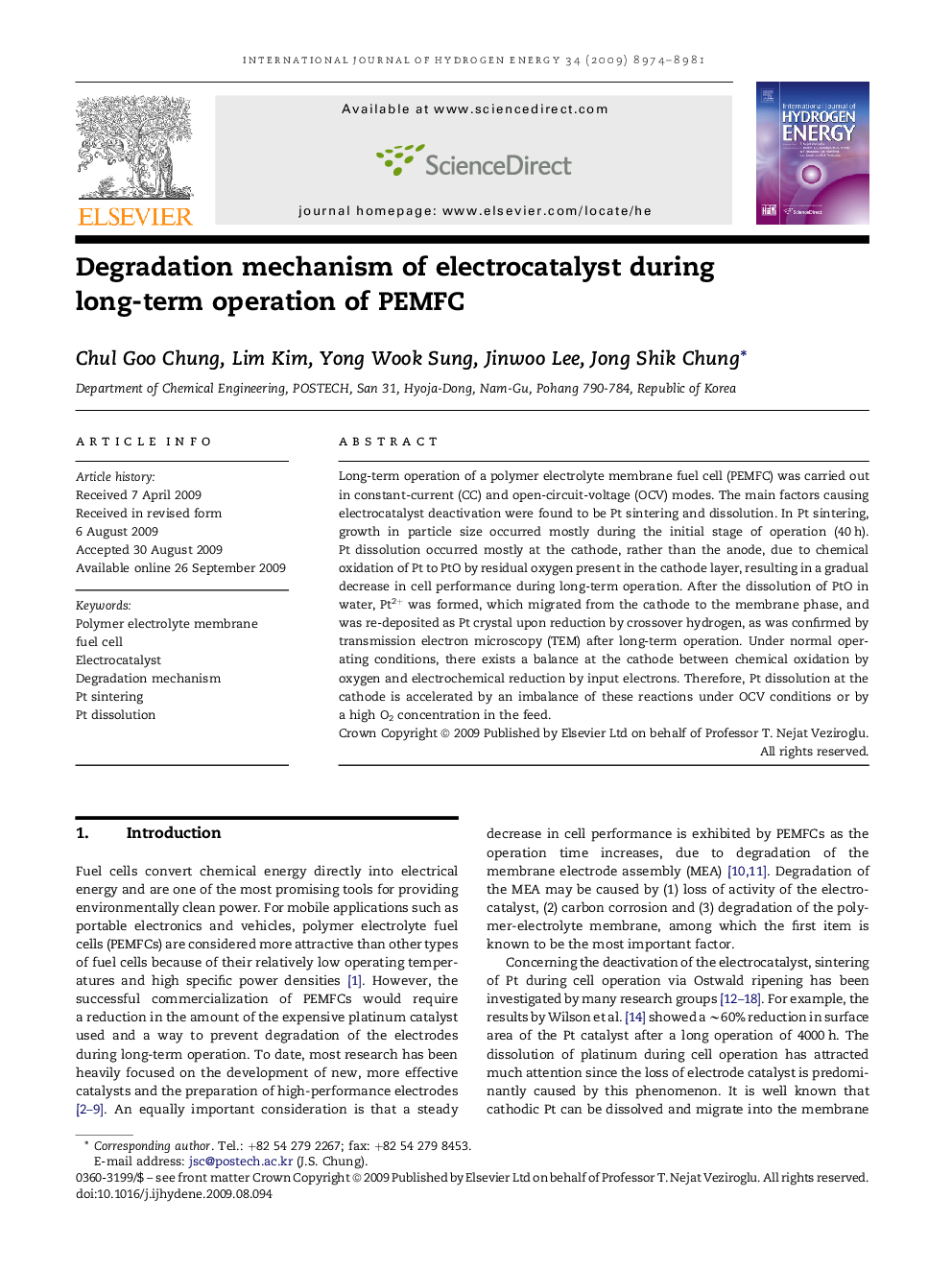| Article ID | Journal | Published Year | Pages | File Type |
|---|---|---|---|---|
| 1283030 | International Journal of Hydrogen Energy | 2009 | 8 Pages |
Long-term operation of a polymer electrolyte membrane fuel cell (PEMFC) was carried out in constant-current (CC) and open-circuit-voltage (OCV) modes. The main factors causing electrocatalyst deactivation were found to be Pt sintering and dissolution. In Pt sintering, growth in particle size occurred mostly during the initial stage of operation (40 h). Pt dissolution occurred mostly at the cathode, rather than the anode, due to chemical oxidation of Pt to PtO by residual oxygen present in the cathode layer, resulting in a gradual decrease in cell performance during long-term operation. After the dissolution of PtO in water, Pt2+ was formed, which migrated from the cathode to the membrane phase, and was re-deposited as Pt crystal upon reduction by crossover hydrogen, as was confirmed by transmission electron microscopy (TEM) after long-term operation. Under normal operating conditions, there exists a balance at the cathode between chemical oxidation by oxygen and electrochemical reduction by input electrons. Therefore, Pt dissolution at the cathode is accelerated by an imbalance of these reactions under OCV conditions or by a high O2 concentration in the feed.
